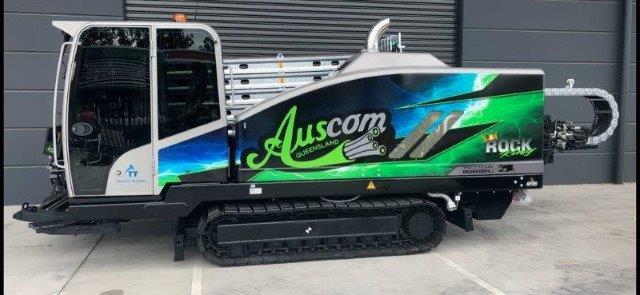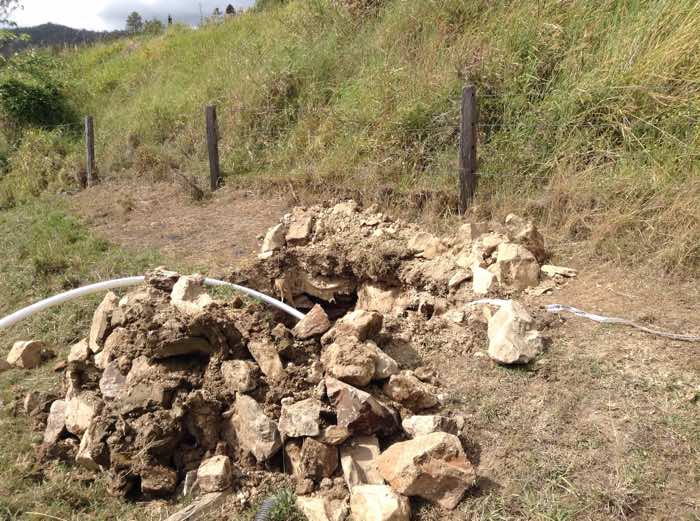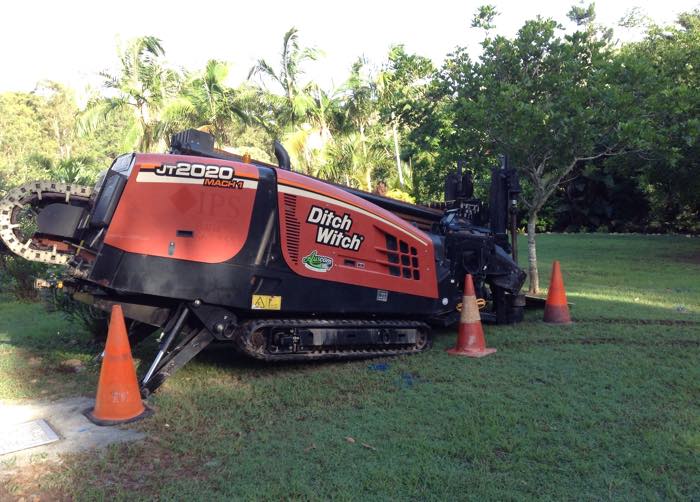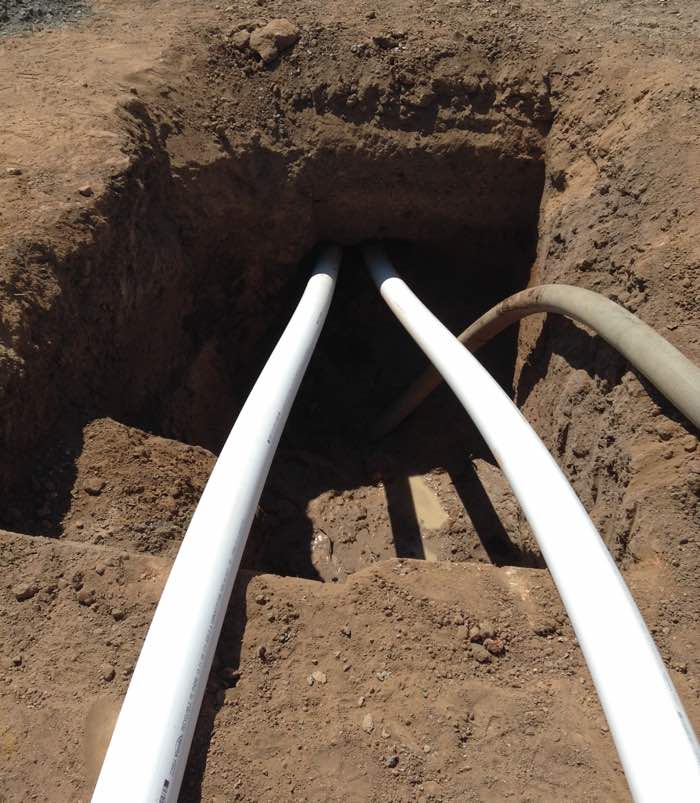We specialise in all horizontal drilling services for the installation of underground conduit and pipe
The term Horizontal Directional Drilling (HDD) is used to describe the minimal impact trenchless method of installing underground infrastructures such as Telecommunications, Power cable conduits and water line service requirements without the need to disturb surfaces. It is used for crossing roads, waterways, congested areas, environmentally sensitive areas and areas where there are no viable alternatives.
HDD is a process which includes the identification of existing services electronically by utilising cable locators and also positive identification by the means of non-destructive digging (NDD) to ensure no damage to existing underground infrastructure. Existing services located are potholed to avoid any disruption or damage to maximise the safety of all pre-identified infrastructure.
Small diameter surface entry and exit points are created prior to the initial pilot drill shot. A Horizontal drilling guidance system is used to track the sonde which is inside the drill head to determine the correct path to ensure safe passage to the surface exit point. The initial bore shot is then enlarged if required to facilitate the installation of the pipeline. The pipe or conduit or even multiple pipes are then pulled into the bore path creating a section of underground pipe.
Auscom has many drills in various sizes to access any space with the latest tracking equipment. Our drilling heads are available for different types of rock or soil, we have drills that are capable of rock from low MPA such as sandstone to high MPA rock offering a directional drill capability for your every need.
Reasons why you should use horizontal directional drilling vs. trenching for your next project
- More cost efficient, especially when there are high restoration costs including trench or concrete/ bitumen reinstatement
- More time efficient, pipe is installed in minimal time especially over long distances compared to trenching. Each shot can achieve minimum 20 meters and up to 200 meters
- Easier installation in areas with limited access (under buildings, roads, railway tracks, hills, waterways, congested areas, environmentally sensitive areas.
- Less impact on job site and in the public eye
- Maintains a cleaner job site
- Reduced installation time, which can save time in project schedule
- Environmentally-friendly process
- Life cycle costing – You do not have on-going surface slumping and reinstatement costs from backfilled trenches
- Less disruption to traffic and pedestrians in congested areas





